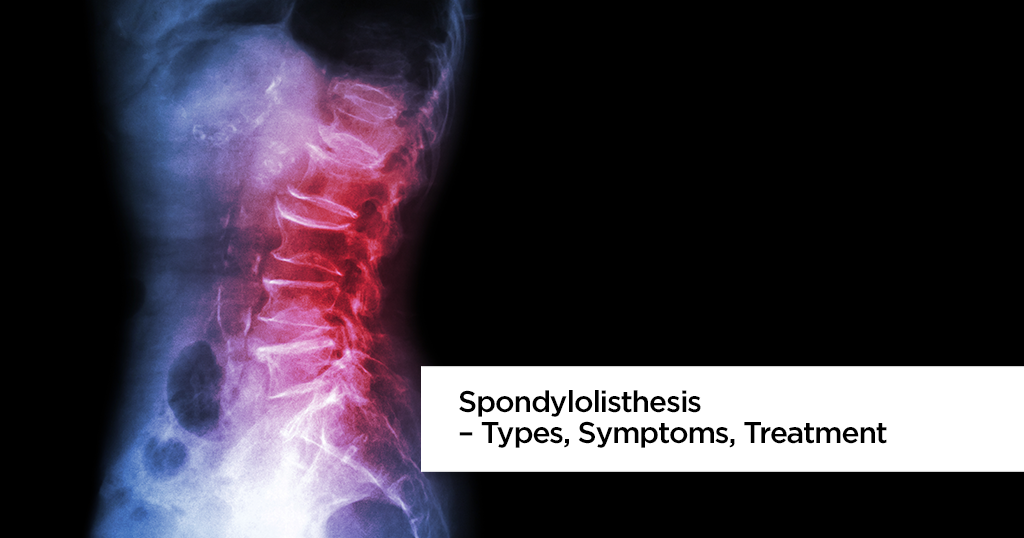

Spondylolisthesis is a type of spinal deformity where one vertebra is displaced over the one below it.
The displacement, if forward, is called anterolisthesis and if backward, is called retrolisthesis. This problem generally occurs in the lower back or lumbar spine between the last two lumbar vertebrae (L4 – L5) or between the last lumbar and first sacral vertebra(L5-S1). Spondylolisthesis is responsible for causing narrowing of the spinal canal or compression of the nerves exiting at that level.
There are five types of spondylolisthesis as listed below. The risk of developing it increases if there is a family history of backache or in athletes like gymnasts, weight lifters and football linemen whose spines are subjected to large forces repeatedly.
The physician may suspect spondylolisthesis after taking the patient’s history and some examination. It can be confirmed by X-rays of the lumbar spine in the lateral view. The severity of the condition is described by grading it from 1to 5 where 1 is the mildest and 5 is the most severe.
The treatment options are conservative and surgical. In mild and uncomplicated cases, rest is prescribed while athletes are advised to discontinue exercises for some time. Anti-inflammatory drugs are prescribed for backache and specific exercises help to strengthen the abdominal muscles. If a patient has symptoms of tingling, epidural steroid injections are of value. In athletes a special brace can be worn which extends the lumbar spine and promotes fusion of the two bones.
Surgery: Surgery depends on the grade of the condition and if the bone is active. In some cases a bone graft has to be placed , fitted with screws. If the nerves are compressed, decompression is carried out and the area around the nerves is cleared. The surgeon takes a call to join the vertebrae (lumbar fusion) in the original position or in the new position after the bone has slipped.
Spondylolisthesis cannot be completely prevented. However, certain athletes like gymnasts and football linemen have a higher risk of developing it.
Our expert general medicine specialists verify the clinical accuracy of the content to deliver the most trusted source of information, making the management of health an empowering experience.

October 25, 2024